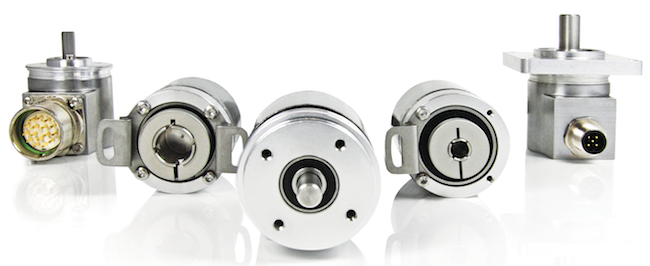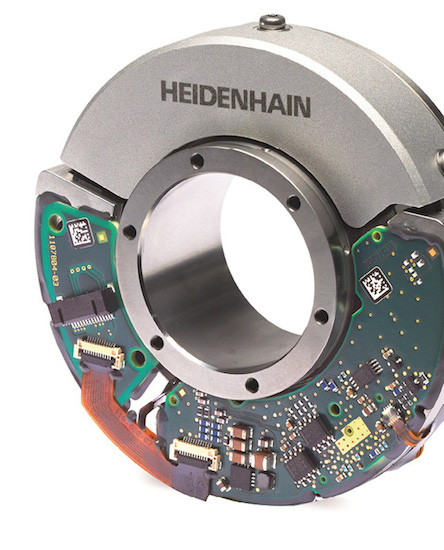In response to their customer’s requests, encoder manufacturers continue to offer more customization options. We asked encoder manufacturers for their input on encoder trends as well as trends in the motion control industry in general. Here’s what they told us.
Has your company added or expanded services to provide more in-house engineering support and upfront customization for your customers or their end users?
Christian Fell
VP, Technology and Custom Solutions
Posital Fraba
A core feature of POSITAL’s product strategy is expressed by the term “mass customization”. Our products are based on a modular architecture with common technology platforms and extensive use of ‘variability through software’. This means that we can offer customers what amounts to custom configurations while taking advantage of economies of scale to keep prices down.
The entry point for customers is the POSITAL Product Finder, a web-based tool that makes it easy to explore the full range of POSITAL position and motion sensor products, including rotary encoders, inclinometers (tilt sensors) and linear position sensors. With over a million possible product configurations available, the Product Finder enables potential users to efficiently zero in on a device that will meet their exact requirements, based on their choice of measurement parameters, mechanical features and electronic interfaces. Once a suitable product has been identified, it can be ordered from POSITAL or from one of the company’s value-added distributors. Devices are custom-assembled through a computer-controlled manufacturing system that ensures quality, traceability and rapid delivery of the final product at prices comparable to standardized mass-produced items. This approach is highly flexible and can accommodate orders of any size, down to ‘MOQ1’ (minimum order quantity – one).

For customers with special requirements, we offer customization support, based in each of the regions where we operate (Americas, Europe and Asia). The helps ensure that customers can get help in a language and time zone that works for them.
The POSITAL product portfolio includes many devices that are field programmable, which extends the idea of customization, as performance characteristics can be fine-tuned to meet specialized requirements.
Do you see the same or more demand for motion designs offering design simplicity or turnkey operation? If you see more demand, what kinds of pre-engineered solutions are you offering to satisfy this change in the marketplace?
Kevin Kaufenberg
Product Manager
HEIDENHAIN
Yes, we clearly see a trend in the motion design area for a turnkey product. For example, many OEMs now realize that the task of marrying an angle style encoder to their rotary bearing can sometimes be tedious, and the end resulting accuracy may not be the same from one axis to the next. This task takes varying amounts of time on the production floor and therefore production costs are not necessarily fixed. For this reason, HEIDENHAIN now offers a series of modular angle encoders that can take axial and radial load, while the encoder disk is mounted to the bearing supplied by HEIDENHAIN, and a guaranteed accuracy is ensured on this system. Called the MRP series, there are three different sizes with varying line counts, loads, and accuracies, all supplied with an accuracy chart that measures the system in five dimensions and includes non-repeatable run outs of the bearing. Our OEMs like to order this type of product since its just one part number and they can simply install into their axis of rotation and be ensured that the axis is of high quality and long life without servicing.

What kinds of large-scale industry moves are you seeing to miniaturization, System-on-Chip (SoC) technologies, automation, efficiency and customization? How do these trends relate to the configurable components your company sells?
Christian Fell
VP, Technology and Custom Solutions
Posital Fraba
At POSITAL, we have been on a consistent course of replacing complex electromechanical assemblies with components based on solid-state electronics. For example, for our rotary encoders, we’ve developed high-precision devices that make use of simple Hall-effect measurement technologies in place of more delicate multi-component optical systems. By harnessing the potential of high-performance microprocessors to run sophisticated signal processing software, we’ve been able to achieve performance levels that approach the accuracy of the more expensive optical technologies, but in more compact, robust and versatile packages. If we need to change device characteristics (e.g. number of pulses per turn for an incremental encoder), it’s a simple matter of updating the device firmware, with no need to modify mechanical components. Embedded microprocessors also enable us to support a variety of higher-level communication protocols (such as various flavors of industrial Ethernet) into our products.
We’re particularly excited about the possibilities of adapting our new measurement technologies to areas such as servomotors. There are currently two dominant technologies in this area. Resolvers are simple, robust and inexpensive. However, these are analog devices that require an A/D convertor to participate in a digital control system. They are also limited to a single-turn measurement range. On the other hand, optical encoders are available as high-precision devices, digital, multi-turn transducers, but are relatively costly. Our newest products combine magnetic measurements with microprocessor-based signal processing to fill the gap between these approaches. They’re cost-effective and zero maintenance, but with performance levels that will meet all but the most extreme requirements. Our absolute versions have a multi-turn measurement range based on a self-powered rotation counter system. By harvesting energy from the rotary motion of the shaft, we ensure that absolute position measurements always reflect the full operational history of the device, even if rotations occur when instrument power is unavailable. As a result, there is no need for backup batteries.
Where do you see the Internet of Things, IIoT, Industry 4.0, or Connected Industry changing motion system design?
Mark Langille
Dynapar
The reduced cost of embedded system is allowing a whole new class of machines to be monitored on-line. In IIoT space we are seeing growing interest in the variety of vertical markets embracing machine health/condition monitoring systems. Manual route based data collection and analysis are the tried and true method for predictive maintenance programs of large rotating assets. Online systems can now be applied to even smaller but still critical assets and the methodology can be improved upon in three key ways; decentralized data acquisition, data presentation and cloud analytics democratizes the info for all stakeholders, and providing contextual information (eg. rpm) to make the system situationally aware.
The encoder can be transformed by our OnSite system into the “smart thing” at the edge that makes these improvements possible. Since the data is in the cloud and there is no special software to license, load, and maintain all the stakeholders can now use the data to make more informed decisions. Ultimately this translates into better asset utilization.
Christian Fell
VP, Technology and Custom Solutions
Posital Fraba
Terms like IIoT and Industry 4.0 are new, but the trends that they describe have been developing for several decades. A key foundation technology for the new world is the data communications networks that form a backbone. This started with fieldbus communications (PROFIBUS, CANopen) that were designed to simplify wiring in work cells or vehicles. They were followed by various forms of industrial Ethernet which expanded the available address space and opened the door to vertical integration with corporate ERP and other higher-level systems.
Coming back down on the factory floor, an important characteristic of networked systems is that they enable two-way communication between controllers and “edge” devices such as sensors, actuators and drives. In addition to reading sensor data and issuing commands, the controller can monitor the health of all of the devices in the network and predict maintenance requirements. Of course, to make this dialogue meaningful, the devices at the workface need to have an adequate level of embedded intelligence.






Leave a Reply
You must be logged in to post a comment.